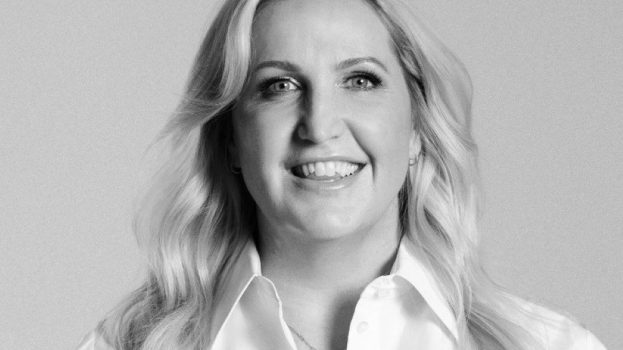 It’s a good time to be in the recruitment business.
It’s a good time to be in the recruitment business.
Global recruitment firms like Adecco in Switzerland and Randstad Sourceright in the Netherlands, while taking a hit in 2020, have bounced back in 2021 and are now in better shape than they were before the pandemic. A recent article in the Economist pointed out that after the financial crisis of 2007-09 it took seven to eight years for the revenue of these two firms to return to their previous highs, but it only took them six to nine months to recover from the COVID-induced downturn. The two firms’ combined market value, at $25 billion, now exceeds its pre-pandemic level.
Randstad Sourceright has just released its Talent Trends 2022 report, which surveyed over 900 C-suite and human capital leaders across 18 markets around the globe. The report focuses on the four industries in which Randstad Sourceright specializes: IT and technology, financial services, high-level manufacturing and life sciences/pharma. Focused as it is on leadership roles, the survey did not engage with lower-level employees. There is another report for that, called the Randstad Workmonitor.
We asked Veronica Frisch, EVP and head of Randstad Sourceright Canada to comment on some of the more pertinent themes.
Why, in your view, is the Great Resignation happening?
People are more determined to take charge of their lives and careers. With many seeking remote work schedules, flexible hours, better pay and sense of purpose, the strategies developed before the pandemic have become outdated. Now employers must walk a tightrope, balancing the new demands of talent alongside long-established company practices and culture.
Is it possible that people had a lot to be unhappy about even before COVID, and that the pandemic has just been a trigger for them to express that unhappiness?
The roller coaster ride we call the pandemic has placed tremendous stress on everyday life, deeply disrupted the workplace and inflicted all sorts of new and familiar fatigue on everyone. Because of such tolls, people are more determined to take charge of their lives and careers. Randstad’s Workmonitor research reported that the Great Resignation is part of the Great Enlightenment movement in which most surveyed workers said they had more clarity about their personal and professional goals.
What role does systemic inequalities in large publicly traded corporations play in shaping employee attitudes and behaviours?
While our research does not address this specific topic, the report does address the disconnect when it comes to DEI (Diversity, Equity and Inclusion) strategy and execution. While 88% of Canadian human capital leaders say DEI is embedded in their talent strategies and is integral to everything they do, when it comes to practice vs. theory, only 54% say their hiring practices supported their diversity goals in 2021, indicating organizations perhaps put their DEI goals on the backburner.
Canadian businesses will need to better understand how workplace diversity, equity and inclusion are fundamental elements of their talent strategy. The reality is, by sustaining the momentum behind their DEI efforts, they will expand their talent pools and gain greater access to highly qualified professionals.
With workers in the driver’s seat, are employers now more focused on employee experience?
When our 2022 Talent Trends research asked companies how they are delivering a better talent experience, they focused on actions that foster well-being. Top answers include implementing change management and knowledge sharing for their people (49%), as well as creating more transparency around workplace culture, the recruitment process and advancement potential (49%).
But the survey found that there remains a disconnect for many organizations to completely implement their talent experience strategies. For example, only 40% of Canadian organizations are offering more channels for talent to give feedback on company policies and procedures. And while 82% of employers globally say that focusing on employee well-being is helping them combat talent scarcity, just 67% of employers in Canada say the same. Sixty-two percent are investing in workplace culture, employee feedback and engagement systems to better gauge employee sentiments and understand their needs.
One of the recommendations was to “inspire creativity and purpose” in the age of hybrid working. How does a corporation define “creativity”?
Organizations have an opportunity to elevate engagement and creativity by helping their talent develop and grow alongside the business. The most effective way to do this is to build on your current way of working, but also consider new ideas that spur collaboration and aspiration.
By fostering a culture that creates passion and common goals — what some are now calling “human magic” — organizations can drive better performance. Beyond technology and scheduling accommodations, frequent and authentic communication is critical to motivating teams and inspiring creativity. When your leaders ensure people understand and believe in the company’s mission and goals, as well as how they individually contribute at a team level, you help them see the purpose of their hard work.
Your report also recommends creating a culture of empathy and authentic human connections. How do you manufacture empathy and authenticity?
The report found that it’s not about trying to “manufacture” empathy and authenticity, but rather about reinventing corporate cultures to support the shifting needs and concerns of the people that work for them. Talent’s expectations have shifted significantly during the past two years. A positive culture that focuses on empathy is much more likely to lead to greater retention and job satisfaction and has more durable effect on morale than pay.
Empathy is cited as a top factor in creating a strong candidate experience, according to this year’s research, 73% believe that putting personal well-being first is important to job applicants when it comes to culture. More than half are investing in workplace culture and employee feedback systems to better gauge employee sentiments and understand their needs, a jump from 45% last year. The same percentage, 56% also say they are providing training for soft skills such as adaptability, time management, creativity, teamwork and communication.























